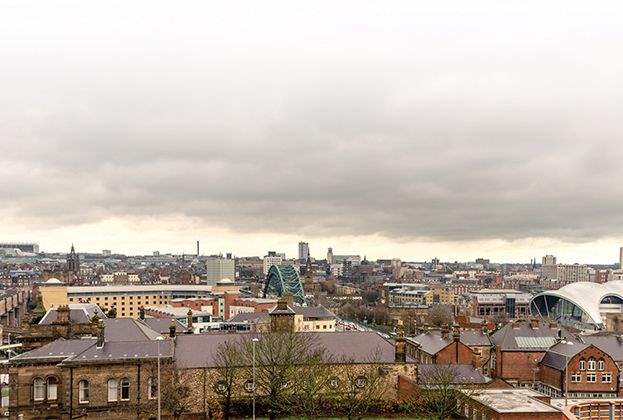A range of uses are required to support a vibrant city centre
Housing delivery across Newcastle has increased dramatically since hitting its nadir in 2012–13 when only 65 dwellings were completed. In 2015–16, net additional dwellings surpassed the 1,000 mark for the first time on record. This was followed up by over 2,700 and 2,300 homes delivered in 2016–17 and 2017–18 respectively, which are record levels for the local authority.
This means that the city is now delivering far in excess of both its Core Strategy target, 750 per annum, and MHCLG’s standardised approach to housing need, 1,073; welcome news following a decade of undershooting its targets. This poses Newcastle a somewhat unique challenge among major regional cities. Not how to increase delivery to meet demand, but how to ensure that this level of delivery continues, so that Newcastle can maintain its position as one of the most affordable UK core cities.
Average new-build values in Newcastle were £196,000 in the 12 months to September 2018, which is marginally higher than second-hand values which were £191,000 over the same period.
Values across Newcastle are highest around the urban fringe and in Jesmond and Gosforth, while the city centre is lower value. The lower values in the city centre potentially present a challenge for bringing forward new urban regeneration schemes.
.png)
Green belt release
Part of Newcastle’s success in increasing housing delivery has come from large-scale developments following green belt release, in particular Newcastle Great Park. The development started in 2001 and is currently being bought forward by Persimmon and Taylor Wimpey.
Over the past five years, the development has accounted for almost a third (31%) of new-build sales in Newcastle upon Tyne. Newcastle Great Park will continue to be an important contributor to the city’s housing delivery, with a further phase of 1,200 homes receiving outline planning permission in December 2018.
However, Newcastle Great Park isn’t the only large-scale development coming forward on land formerly in the green belt. In 2015, the council released land around Callerton for a 3,000 home development, the first phase of which is due to start on site this year.
.jpg)
Where next?
Newcastle upon Tyne is highly constrained by the green belt, with over a third (35%) of its area currently protected. This has made it difficult for the council to find unconstrained land outside of the city’s urban core to deliver new housing to meet its need, as highlighted by the need to release land at Newcastle Great Park and Callerton. The city will need to continue to identify new sites if it is to sustain its current and forecast strong economic growth.
This raises the inevitable question of where next?
Plans are being brought forward by Newby and Igloo for new mixed use developments at the former Calders site and East Quayside respectively, which will regenerate parts of the waterfront. ‘But beyond this, Newcastle will likely have to look at further green belt releases if it is to support future housing growth within its boundaries.’
If this is not possible then the city council will have to look beyond its own borders. Here it will need to co-operate with its partners in the North of Tyne devolution to deliver new housing in their authorities that are properly connected to the city’s employment centres.
.png)
Where next for housing outside of the city centre?
Source: Savills Research, Glenigan
.jpg)


.jpg)